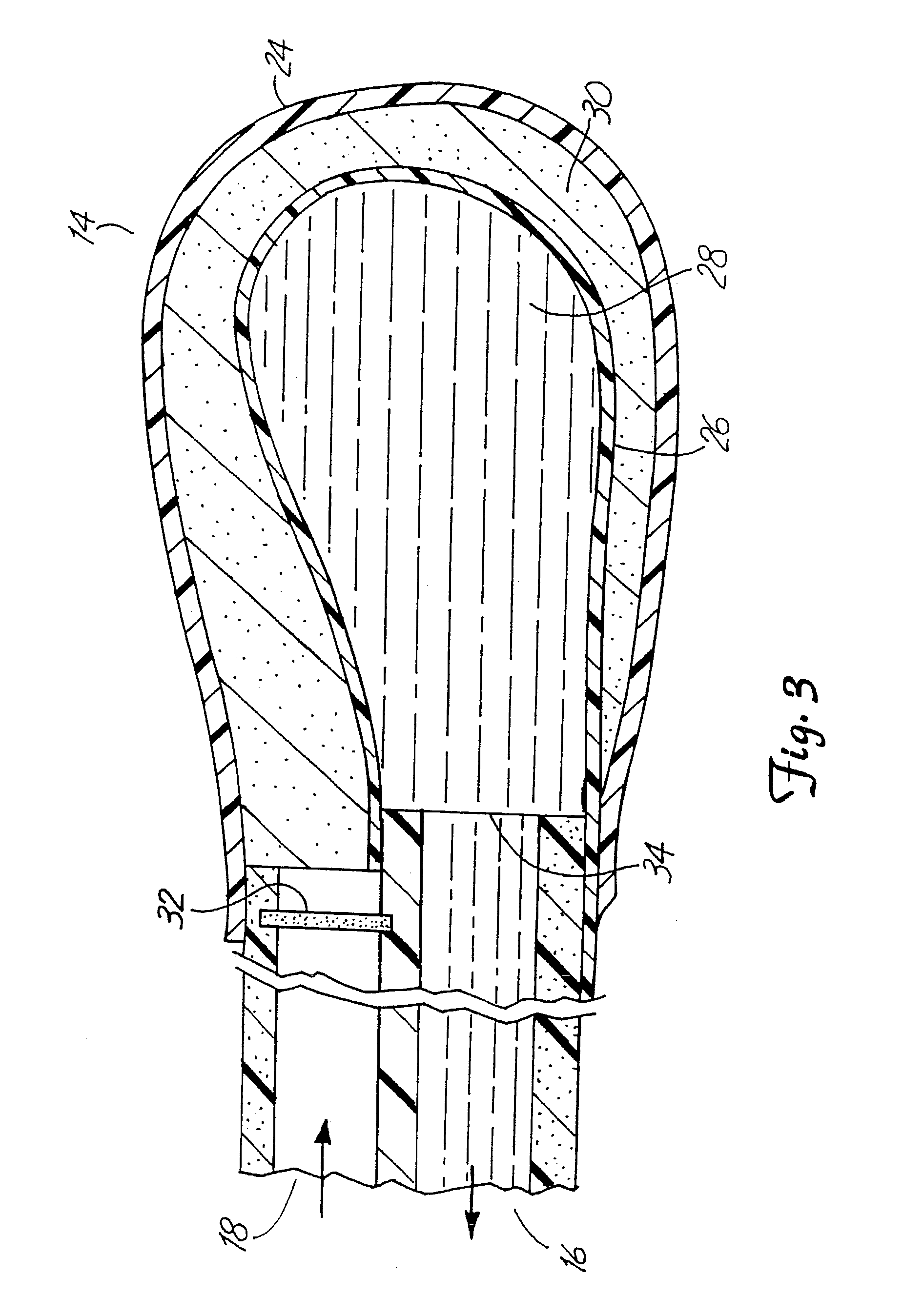System and method for site specific therapy
- Summary
- Abstract
- Description
- Claims
- Application Information
AI Technical Summary
Benefits of technology
Problems solved by technology
Method used
Image
Examples
example 1
[0217]Cerebral edema is induced in rats, and thereafter reduced by the use of microdialysis fibers implanted directly into injured brain tissue. As an initial experimental phase, a hyperosmolar solution of albumin is infused into the ventricles of the rat after experimental brain injury has been induced. Conventional methods (e.g., Onal et al.) are used to induce the injury, with the following exceptions: a contusion injury is used and infusion is performed over a longer period to see if the benefits of infusion can be prolonged. Twelve hours after experimental TBI is induced, an infusion catheter is placed into the lateral ventricle. Thereafter a 20% (w / v) solution of albumin in saline is infused at 0.5 ul / hour for a period of six hours. Brain water content is determined at 24 hours.
[0218]In a subsequent phase, the effect of intraventricular microdialysis on brain water content is determined. Some impermeant solutes are already present in the ventricles (and the concentrat...
example 2
Osmolarity of Human Traumatic CSF
[0222]A study was performed using banked human CSF. Osmolarity was determined in control patients (no head trauma), and three patients who suffered closed head injury. Normal osmolarity of CSF in the controls was 305 mosmols / L. As seen in FIG. 49 showing Table I, the TBI patients had an increase in CSF osmolarity in the first 3 days, with an even greater increase in the next three days.
[0223]These findings of a delayed increase in CSF osmolarity are consistent the osmotic fluid shift premise described herein. Although CSF from trauma patients has apparently not been examined for changes in osmolarity before, and it is difficult to make conclusions based on this small number, it nevertheless appears that CSF osmolarity does increase after head trauma. This finding, together with findings in the literature that CSF osmolarity increases after a cryogenic injury in rats, and that brain tissue osmolarity increases within hours after ischemia provides supp...
example 3
Spinal Microdialysis
[0277]The method and system of the present invention are used to perform spinal microdialysis using the following materials:[0278]1. A 3 inch needle, 18-20 gauge, similar to contemporary spinal tap needles. This is placed between the third and fourth lumbar vertebral space. The distal 2 mm of the needle is unique in that it has a memory to bend 50-70 degrees when the obturator of the needle is removed.[0279]2. The obturator of the needle is straight, rigid, and has a lumen.[0280]3. The patient assumes a lateral decubitus position with knees drawn up. The L3-4 interspace is palpated and marked after sterile scrub of the skin.[0281]4. The spinal needle with obturator in place is advanced until a slight decrease in resistance is felt as the needle tip pierces the posterior spinal ligament and enters the spinal canal CSF space.[0282]5. Once CSF is confirmed to drip from the lumen of the obturator, the obturator is held stationary and the needle is advanced another 2-...
PUM
 Login to View More
Login to View More Abstract
Description
Claims
Application Information
 Login to View More
Login to View More - R&D
- Intellectual Property
- Life Sciences
- Materials
- Tech Scout
- Unparalleled Data Quality
- Higher Quality Content
- 60% Fewer Hallucinations
Browse by: Latest US Patents, China's latest patents, Technical Efficacy Thesaurus, Application Domain, Technology Topic, Popular Technical Reports.
© 2025 PatSnap. All rights reserved.Legal|Privacy policy|Modern Slavery Act Transparency Statement|Sitemap|About US| Contact US: help@patsnap.com



